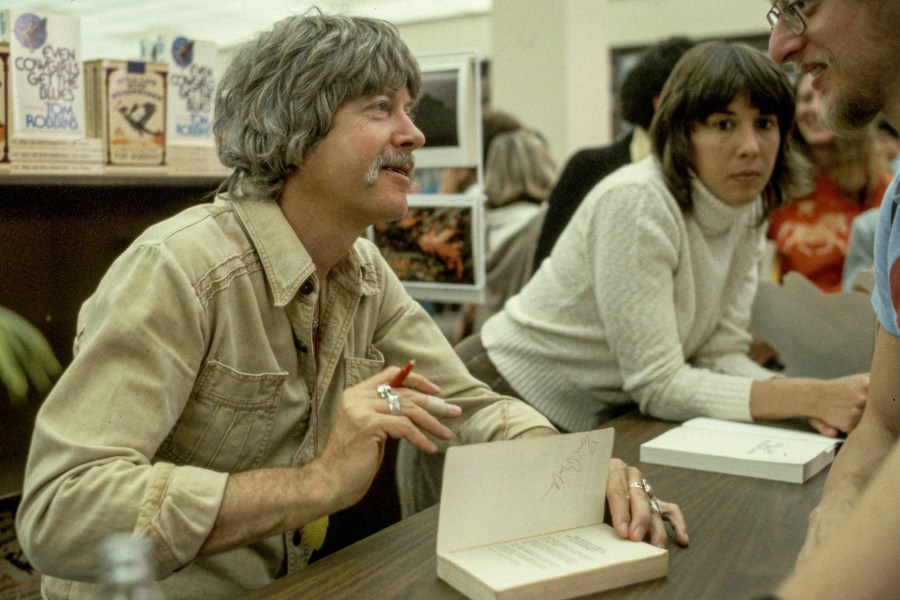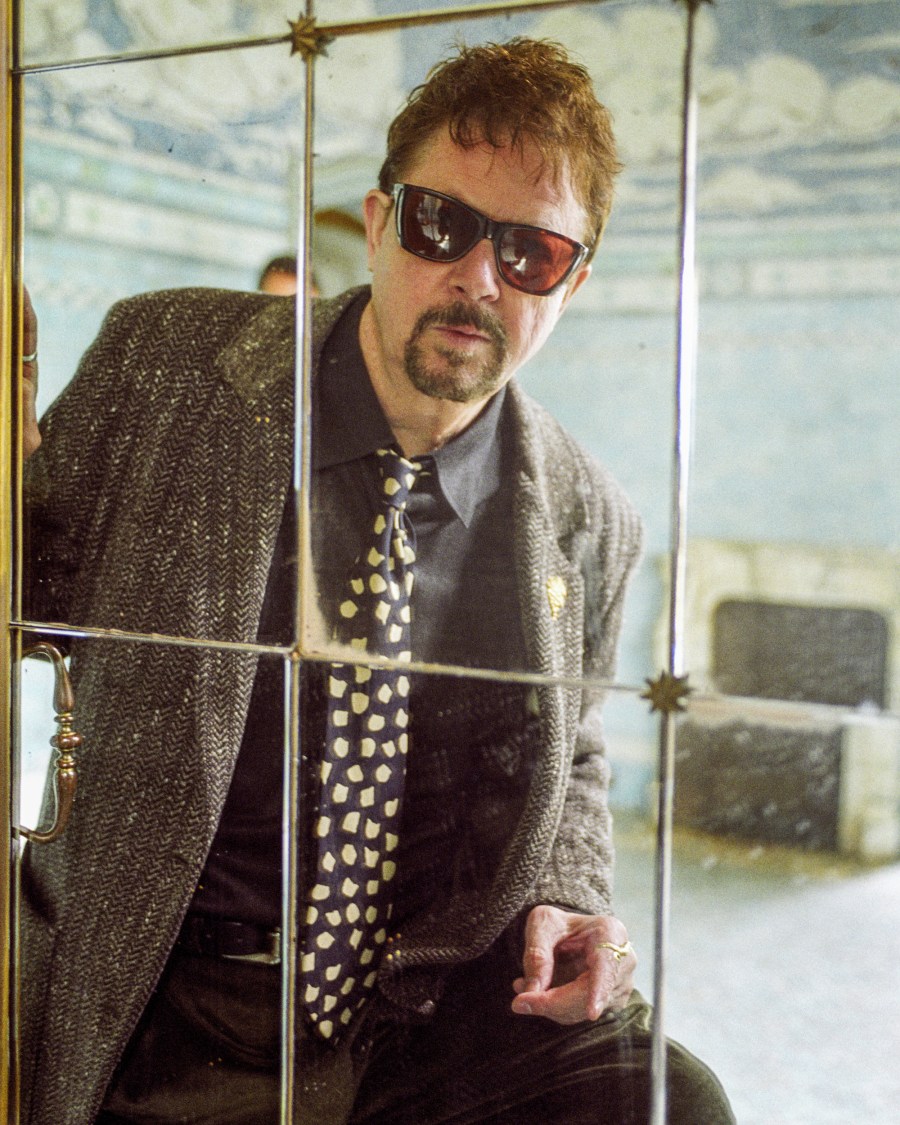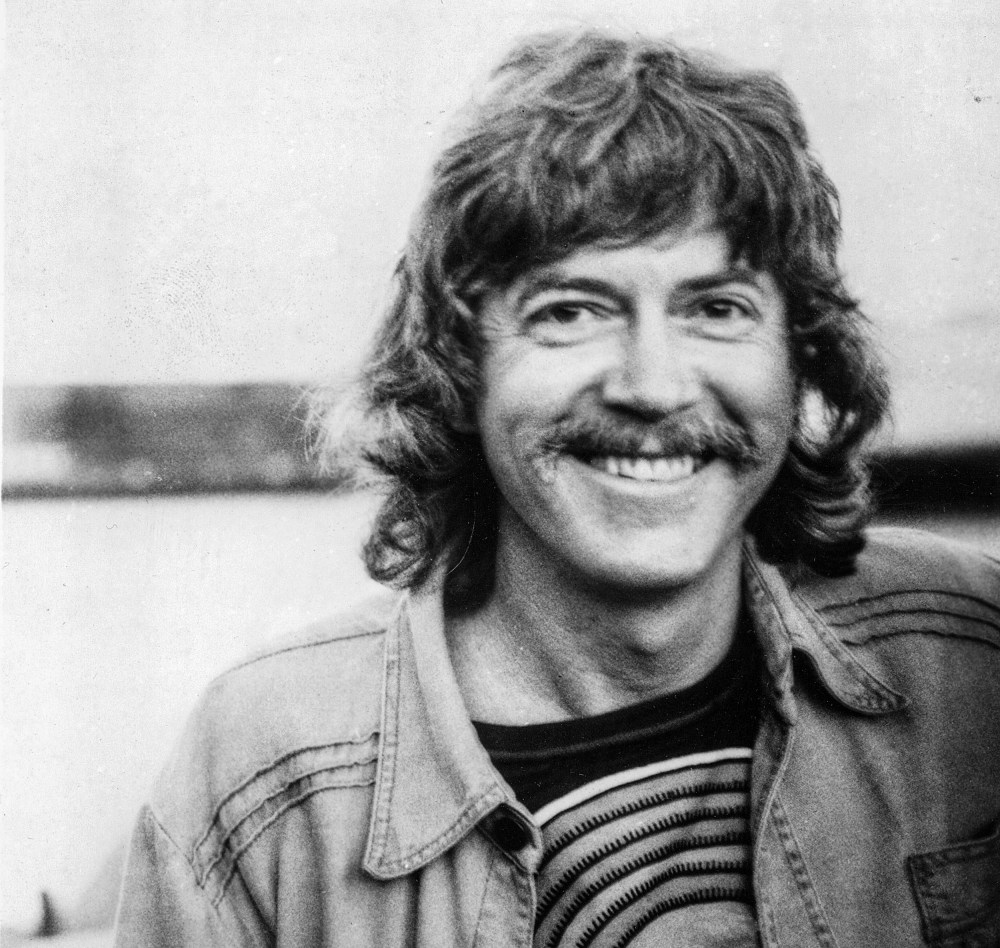The Pacific Northwest is the youngest child of America’s geographic regions, perpetually overlooked and misunderstood. So it’s perhaps fitting that obituaries for the novelist Tom Robbins have tended to portray him as a minor figure in the countercultural literary movement that began in the late 1960s.
From the perspective of American literature, it’s true that Robbins, who died Sunday at 92, is an adjunct to better-known figures such as Kurt Vonnegut or Robbins’ friend and fellow Northwesterner Ken Kesey, though all three were in the rare subset of authors who wrote both cult classics and bestsellers.
But if you lived in the Pacific Northwest in the latter half of the 20th century, you know that Robbins was, at his peak, the region’s pre-eminent author in a way that mattered more than it might for another part of the country. We didn’t just read Robbins, we needed him. In a comical scene straight from one of his books, a desperate fan once broke a window in a Seattle bookstore late at night to get one of his hardcover releases, leaving behind an apologetic note and a fistful of cash.

Robbins wasn’t just a novelist living in the Pacific Northwest, he was a novelist of the Pacific Northwest. In books such as “Jitterbug Perfume” and “Still Life with Woodpecker,” he took major cultural influences of the area — Scandinavian stoicism, Asian philosophy and Coast Salish pragmatism — and blended them into irreverent, shaggy-dog novels full of poetic lyricism, pop-philosophy and goofy wordplay. He once said he didn’t know the plot of his books before he started writing; you’d be forgiven if you weren’t sure of them when you were done reading either.
But then you’d come across a description of the Skagit Valley, where he made his home, and plot seemed secondary.
“It is a landscape in a minor key,” he writes in “Another Roadside Attraction.” “A sketchy panorama where objects, both organic and inorganic, lack well-defined edges and tend to melt together in a silver-green blur. Great islands of craggy rock arch abruptly out of the flats, and at sunrise and moonrise, these outcroppings are frequently tangled in mist. Eagles nest on the island crowns and blue herons flap through the veils from slough to slough. It is a poetic setting, one which suggests inner meanings and invisible connections.”

It is a benediction to read words that reflect your life back to you. When your American history class centers on far-away Civil War battlefields, your American literature class discusses Melville and Twain and your favorite TV shows are set in the various boroughs of New York City, to read about where you live is inspiring. It helps you understand your place in the scheme of things. It inspires you to stand up for yourself, to tell a visitor, as my grandfather would, “That’s not a river, that’s a slough.”
Robbins’ heyday came before Seattle hit it big. His peak output from the 1970s to the late 1980s was a time when the city still wondered if we’d ever have a local band as big as Heart, when people were excited that we were getting a Planet Hollywood, when you’d still get a cup of coffee from an espresso cart on a damp street corner. His last great novel, “Skinny Legs and All,” came in 1990, just as that all changed.













